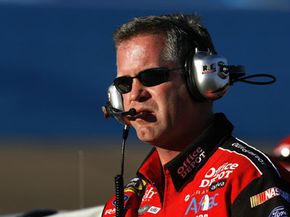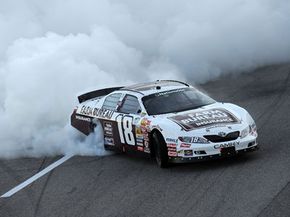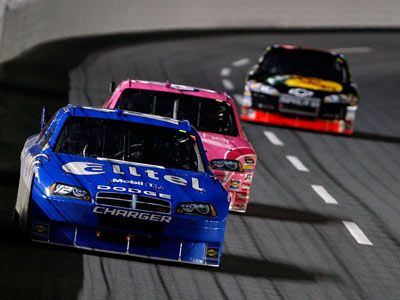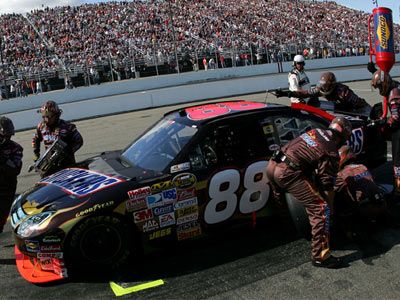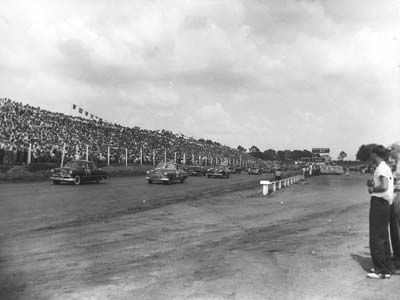Whenever you put 43 cars on a track, all putting out about 750 horsepower apiece and traveling about 150 (241.4 km/h) mph for 500 straight miles (807.6 km), a lot of energy is going to be transferred to the track. As a result, the track can't help but change a bit.
While all NASCAR tracks change during a race, the most pronounced changes are seen on asphalt tracks. This is significant because 28 of the 31 official tracks used in NASCAR races are paved with asphalt; the other three are concrete. Technically, the asphalt tracks are concrete as well; the term concrete denotes a mixture of loose gravel (also called aggregate) held together with a binder, typically cement. Cement is a popular binder because it remains unchanged during races [source: Cheney Lime].
This is not the case with asphalt, which is in a viscoelastic (more liquid than solid) state. Asphalt is made of the heavy oils left behind after the lighter oils in crude petroleum have evaporated. The result of this evaporation is a sludgy material that's solid at room temperature but liquefies with little heat. Asphalt doesn't have a melting point, but at temperatures of over 100 degrees Fahrenheit, it will begin to behave more like a liquid than a solid. These temperatures are easily reached during a race thanks to the forces of friction.
When a NASCAR tire moves across a track's surface, it does so through applied force in the form of torque from the car's engine. This applied force pushes the car forward while the rolling friction pushes in the opposite direction. As a result of this friction, heat builds up, decreasing the asphalt's viscosity and making it more liquid than solid. This makes the track feel oily and slick and can make it difficult to handle, especially at the corners (one reason why the corners at Martinsville Speedway are concrete while the rest of the track is asphalt). Recently-paved tracks are a good place to find slickness resulting from friction-heated asphalt. Eventually, slickness and track wear become less pronounced as the lighter hydrocarbons found in asphalt are removed over time [source: Leslie-Pelecky].
As the asphalt binder is worn away, the aggregate still remains. This exposed aggregate accounts for the other physical change NASCAR tracks -- both concrete and asphalt -- undergo during a race. Because of the heat from the friction between the tire and the track surface, racing tires become malleable. As a result, the aggregate can quickly wear tires down, tearing off small pieces of the rubber that stick to the track. The type and age of the aggregate has an effect on how much rubber a track claims. The track at South Carolina's Darlington Raceway used seashells as an aggregate and it's traditionally been known for chewing tires up. With 43 cars running on any given track, that can add up to a lot of claimed rubber. That means drivers go through more tires, but since rubber provides excellent traction, it ultimately means a benefit for the drivers.
The rubber doesn't stick around forever, though. After a heavy rain, it's washed away, leaving the track green, yet another change NASCAR tracks undergo. Not to worry; after a few laps the track will get rubbered up again, opening the gate for high-speed racing.
For more information on racing and other related topics, visit the next page.
